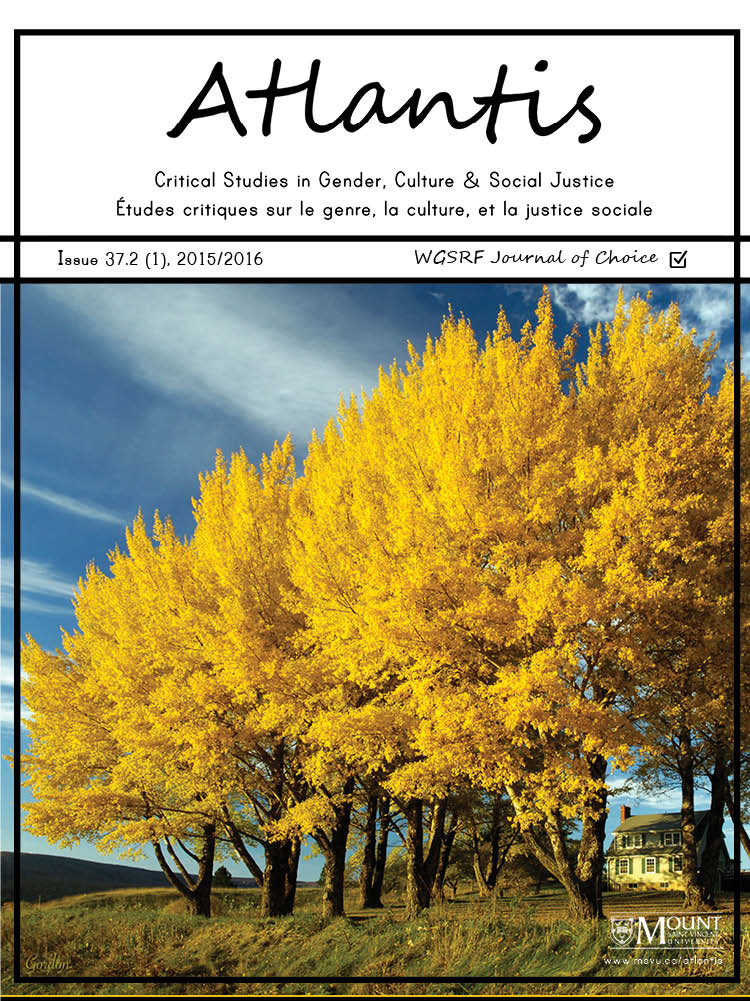Constitutionalizing Women's Equality Rights: There is Always Room For Improvement
Keywords:
constitutional law, gender rights, equality rights, Charter of Rights and FreedomsAbstract
Abstract
This article recommends six improvements in regard to women’s equality rights in Canadian constitutionalism. They are: 1) detail the harms; 2) advocate women’s equality; 3) delete formal equality; 4) make equality absolute; 5) stop comparing women; and 6) recognize intersectionality. Some of these recommendations are directed to legislators; others to judges. It is premature for women to celebrate. Canada’s constitutional guarantees of women’s equality rights are inadequate to the task of protecting us.
Résumé
Cet article recommande six améliorations en ce qui concerne les droits à l’égalité des femmes dans le constitutionnalisme canadien. Il s’agit des suivantes : 1) préciser les préjudices; 2) prôner l’égalité des femmes; 3) supprimer l’égalité formelle; 4) rendre l’égalité absolue; 5) cesser de comparer les femmes; et 6) reconnaître l’intersectionnalité. Certaines de ces recommandations s’adressent aux législateurs; d’autres aux juges. Il est trop tôt encore pour crier victoire. Les garanties constitutionnelles des droits à l’égalité des femmes au Canada sont insuffisantes pour nous protéger.
References
Baines, Beverley. 2012. “Polygamy and feminist constitutionalism.” In B. Baines, D. Barak-Erez, and T. Kahana, eds., Feminist Constitutionalism: Global Perspectives. New York: Cambridge University Press, 452-473.
Baines, Beverley. 2012. “Comparing women in Canada” Feminist Legal Studies 20:2, 89-103.
Baines, Beverley. 2005. “Section 28 of the Canadian Charter of Rights and Freedoms: A purposive interpretation” Canadian Journal of Women and the Law, Vol. 17, 55-80.
Baines, Beverley. 1981. “Women, human rights and the Constitution.” In Audrey Doerr and Micheline Carrier, eds., Women and the Constitution in Canada. Ottawa: The Canadian Advisory Council on the Status of Women.
Crenshaw, Kimberlé. 1989. “Demarginalizing the intersection between race and sex: A black feminist critique of anti-discrimination doctrine, feminist theory and anti-racist politics,” University of Chicago Legal Forum. 89: 138-67.
Hughes, Patricia. 1999. “Recognizing substantive equality as a foundational principle,” Dalhousie Law Journal 22:2, 5-50.
Kome, Penney. 1983. The taking of twenty-eight: women challenge the constitution. Toronto: The Women’s Press.
McIntyre, Sheila. 2006. “Answering the siren call of abstract formalism with the subjects and verbs of domination.” In F. Faraday, M. K. Stephenson, and M. Denike Eds. Making equality rights real: Securing substantive equality under the Charter. Toronto: Irwin Law. 99.
Pothier, Dianne. 2006. “Equality as a comparative concept: Mirror, mirror, on the wall, what’s the fairest of them all?” In S. McIntyre and S. Rodgers Eds., Diminishing returns: Inequality and the Canadian Charter of Rights and Freedoms. Markham ON: LexisNexis Canada Inc, 135.
Downloads
Published
Issue
Section
License
Copyright (c) 2016 Atlantis: Critical Studies in Gender, Culture & Social Justice

This work is licensed under a Creative Commons Attribution 4.0 International License.
Authors who publish with this journal agree to the following terms:
1. Authors retain copyright and grant the journal right of first publication, with the work simultaneously licensed under a Creative Commons Attribution 4.0 International License that allows others to share the work with an acknowledgement of the work's authorship and initial publication in this journal.
2. Authors are aware that articles published in Atlantis are indexed and made available through various scholarly and professional search tools, including but not limited to Erudit.
3. Authors are able to enter into separate, additional contractual arrangements for the non-exclusive distribution of the journal's published version of the work (e.g., post it to an institutional repository or publish it in a book), with an acknowledgement of its initial publication in this journal.
4. Authors are permitted and encouraged to preprint their work, that is, post their work online (e.g., in institutional repositories or on their website) prior to and during the submission process. This can lead to productive exchanges, as well as earlier and greater citation of published work. Read more on preprints here.







